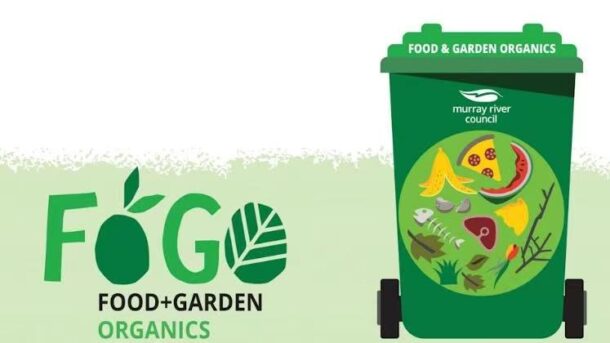In response to a parliamentary question, Australian states like New South Wales and Victoria are accelerating Food Waste disposal. They’ve adopted the FOGO system to turn household food and organic waste into valuable fertilizer, aiming to halve landfill Food Waste by 2030.
What happens to food waste like lettuce or fruit peels in regular trash? In landfills, this waste breaks down without oxygen. Microorganisms then decompose it.This process releases methane and carbon dioxide. Critically, these are major greenhouse gases damaging Earth’s atmosphere.

Australia produces about 8.2 million tons of food waste every year
Australia uses a three-bin system: red (general waste), yellow (recycling), and green (garden waste). Yet the nation still produces 8.2 million tons of food waste yearly. Alarmingly, most ends up in red bins destined for landfill. Based on Sydney’s 2019 data (73% of red bin waste was food), roughly 5.98 million tons decomposes in landfills. This releases 11,362 million kg of CO₂ – equal to yearly emissions from 2.45 million cars. Responding to parliamentary questions, states like NSW and Victoria now accelerate efforts to halve landfill food waste by 2030.
Trash Turns Gold as States Push FOGO to Halve Food Waste
o cut landfill food waste by half by 2030, NSW and Victoria promote FOGO. This system uses existing green-lidded bins to collect uncooked food scraps like fruit peels and vegetable trimmings.
The waste becomes high-quality fertilizer at composting sites. Penrith first launched FOGO in 2010. Now wider adoption is occurring, though unevenly. Some Melbourne suburbs only began in mid-2023.
Crucially, Melbourne now leads innovation with Australia’s first large-scale FOGO for high-rise apartments (6+ floors). A pilot in 6 downtown buildings uses shared food dryers. These cut waste weight/volume by 80% for organic fertilizer production.
Melbourne aims to reuse 90% of food waste by 2030. The fertilizer will nourish parks, gardens, farms, and resident’s plants. Success seems likely – FOGO already diverts 2,368 tonnes annually from 23,000 low-rise homes.
Melbourne’s success in promoting 3 collection modes according to the height of buildings
Melbourne promotes FOGO bins with three collection modes based on building height. Each household gets a free 7L kitchen bucket and 150 decomposable bags.
- Detached buildings:Collect your waste. Place it in your own large FOGO bin. Put the bin curbside on collection day. Trucks will empty it.
- Low-rise apartments (under 5 floors):Collect waste. Place it in the building’s public FOGO bin.
- High-rise apartments (6+ floors):Empty waste into the building’s industrial organic processor. This machine heats, dries, and processes waste directly. Models are Enrich360 (300kg capacity) and EcoGuardians (100kg capacity).
How exactly does FOGO perform?(Q&A)
Q1:How to use FOGO garbage bags?
Put it in the kitchen pail, take it out after full of garbage, tie it tightly, and put it into the FOGO green-lidded garbage can or organic material disposal machine. Only government-approved biodegradable garbage bags (stamped with a certification mark), made from plant materials and free of plastic, are allowed.
Q2:What kind of food can be put into the kitchen caddy?
Fruit and vegetable scraps, bone-in meat, pasta, bread, rice, cereals, eggs and cheese, tea and coffee grounds, soft-shelled seafood and fish bones, newspaper, tissue paper, paper towels, etc. Residents must refer to and comply with the information and regulations issued by each district government for the use of the FOGO garbage collection service, which is not a food waste bin.
Q3:What kind of food cannot be put into the kitchen caddy?
Plastics, general plastic bags, tea bags, coffee capsules, commercial biodegradable coffee cups, liquids (e.g. cooking oil), seafood shells (crabs, oysters, clams, mussels, etc.), recyclables (glass, aluminum cans, cardboard, etc.), soft plastics (plastic wrap, taro chip bags, etc.), string, cotton products, vacuum cleaner waste, ashes, etc.
Q4:Where does the garbage collected by FOGO go?
Food and garden waste from homes is emptied by garbage trucks and transported to a dedicated composting facility for a special process that turns it into moisturizing mulch and nutritious fertilizer for green spaces, taking care of farms, parks and gardens across Victoria.
Food Waste Leads to Resource Reuse, Everyone Can Love the Earth
FOGO simplifies food waste disposal for everyone.For households already composting, it eases the burden without space concerns. For apartment dwellers who care about the environment but lack options, FOGO provides a practical solution – no more sending scraps to regular bins.
The system eliminates common hassles: No fear of rotting smells or needing freezer storage. Just deposit waste in organic processors during service hours (9am-9pm). Instead of guilt, feel pride in contributing to Earth’s health. Across Australia, FOGO is accelerating food waste reduction – truly “GO GO GO”!
Related articles:Plastics:How to Better Recycle? – GWOTech


